Background
The Association was formed to shed fresh light
on the Television systems used by John Logie Baird , and others, following on
Baird's original demonstration in January 1926. Why are we interested in an old
TV system which used only 30-lines and gave very crude results when it was first
broadcast in 1929?
- It is a fascination with the early history of a communication phenomenon
which has moulded our lives during the last 70 years.
- It is a sense of curiosity to see what sort of results those early
experimenters might have achieved with the materials and components which we
have today.
- It is a sense of pride that we in Britain were the first to have a regular
service of broadcast television.
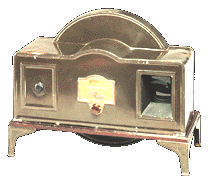 |
|
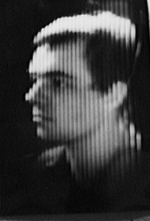 |
The original Baird 30-line Televisor
as used from 1930 to 1935 |
|
32-line image of Jeremy Jago
Club Chair and Newsletter Editor
|
Historical
The Baird Company transmitted 30-line Television from 1929, and on Aug 22nd 1932
the BBC inaugurated the world's first public television service. This eventually
closed down on Sept 11th 1935. Technical advances had made possible a much
improved TV service using 405 lines and this was started in 1936. (This was the
first high-definition television service in the world.) The original 30-line
service could show close-up pictures of faces in reasonable detail, but wider or
long-distance shots had a low entertainment value.This was the era of the
television experimenter, as a television receiver could be built with the
minimum of apparatus and there was considerable satisfaction in receiving any
sort of picture."Seeing by wireless" was an incredible new experience, and
reception was possible over a huge area of Western Europe.
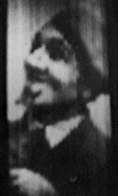 |
|
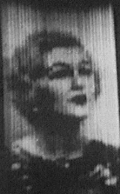 |
Picture of Sir Harry Lauder
taken in the 1930s |
|
Picture of singer Jane Carr
of similar date |
Today
Modern electronics, which can generate colour pictures of 625 lines or more
enables us to update the original Baird system and produce 32 line pictures which
equal, or surpass, the pictures of the early 1930s. Having said that, the beauty
of the subject lies in the fact that mechanical scanning can be used and this
brings in members who have special skills in optics, mechanical engineering and
general mechanical construction.
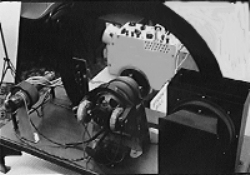 |
|
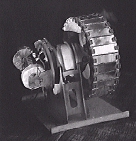 |
Nipkow disc receiver built
by Peter
Smith, G4JNU |
|
Mirror Drum |
Mechanics
Mechanical scanning devices which can be used include the Nipkow disc (shown
above), the drum, the mirror drum, the mirror screw, oscillating mirrors and
combinations of these. The camera usually has a lens to form an image which is
then scanned and the light passes through to a photocell which generates the
electrical signal. An alternative method is to project a "flying spot" of light
on to a subject in a darkened room and use a bank of photocells to pick up the
reflected light. The receiver A similar mechanical scanning method can be used
for display purposes; a modulated source of light can project a "flying spot" on
to a screen where its scanning action will build up a picture. The simplest
device is the Nipkow disc which has a spiral of holes near the edge. On rotating
the disc this spiral scans a small area and if a modulated light source is behind
the disc, the viewer at the front will see a picture. Electronics Mechanical
scanning devices can benefit from modern electronics in several ways; amplifiers
can be designed to suit the particular requirements of the photocell being used;
the use of operational amplifiers will allow the DC signal level to be preserved;
and special circuits will allow the motor speed and phase to be controlled
accurately. Arrays of light emitting diodes have been used to simulate the
original "flat plate" neon lamp, and have even served as a large screen display
device. There are plenty of opportunities for experimentation in NBTV; no one
has yet used a CCD camera for NBTV purposes although vidicon-type cameras have
been constructed. Another avenue now being explored is the use of a computer for
signal processing and display.
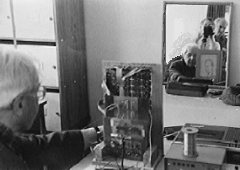
Grant Dixon demonstrating LED matrix display..
note
picture of Baird seen in the mirror
Club standard
The NBTVA has adopted a standard of 32 lines with vertical
scanning. The scanning starts at the bottom right corner and finishes at the top
left corner; this is the same as adopted by J.L.Baird. His pictures had an
aspect ratio of 3 : 7 which is rather too tall and narrow so we are using a
ratio of 2 : 3. In addition we use Phono plugs or 3.5mm jack plugs for the
interconnection of members equipment. Following standard television practice a
sync pulse of "blacker than black" signal is sent at the end of each line except
the end of the 32
nd line where the absence of a sync pulse is
used to reset the frame scanning.
Video records
At the 1997 Convention Don Mclean brought
along two computers to show his work on the Baird 'Phonovision' record made in
the 1920s and also the record of the Astoria Dance Troupe made in 1933. My
personal first impression of this latter was that it was much better than I had
seen when it was demonstrated on the 'Tomorrows World' programme. This is one
instance when a still picture would not give a good impression, it is only with
the movement that the full picture content is observed. Later Don has located
some more early recordings which promise to be extremely interesting.
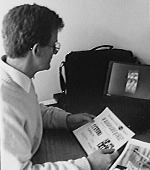 |
Don McLean showing his restoration
of the 1933
recording. |














